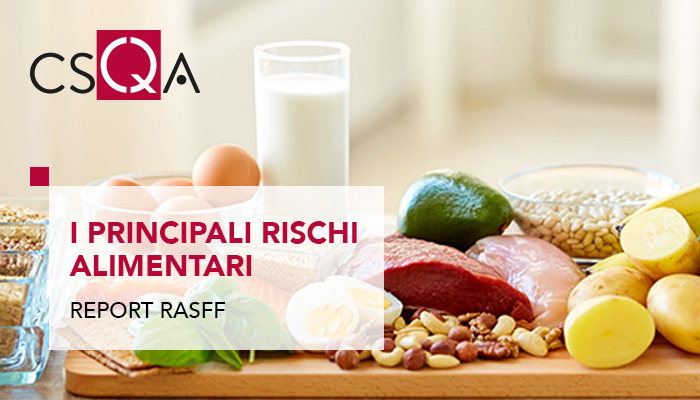
The Rapid Alert System for Food and Feed in Europe (RASFF) allows real-time notification of direct and indirect risks to public health associated with food, feed and materials in contact with food and therefore the timely adoption of appropriate safeguard measures.
The General Directorate for Hygiene and Food Safety and Nutrition has once again drawn up a report on the main health problems that emerged during 2021 , highlighting the main risks notified by the member countries.
During the year 2021, the notifications received through the RASFF were 4588 , compared to 3783 in 2020, 4000 in 2019, 3622 reports in 2018, 3759 in 2017, 2925 in 2016, 2967 in 2015. It should also be noted that a large part of the notifications registered this year is basically attributable to the emergency ethylene oxide found as ETO or its metabolite 2-chlorine ethanol in sesame seeds or in additives used in derived products, with 468 original notifications, and which saw the involvement of all European countries.
Of the 4588 notifications received:
- 4084 concerned human nutrition (3490 in 2020)
- 234 animal feed (172 in 2020)
- 270 materials and objects intended to come into contact with food - MOCA (121 in 2019)
- 1455 were Alert notifications and concerned products distributed on the market
- 1456 refer to imported products rejected at the borders the remaining notifications concern information (1004 information for attention and 673 information for follow up)
An analysis of the RASFF reports from 2021 shows that a high number of notifications concern the presence of pesticide residues (1251), followed by pathogenic microorganisms (774) and mycotoxins (449).
Salmonellae have been found mainly in poultry, nuts and seeds, meat products and herbs and spices, while Listeria monocytogenes mainly in meat preparations, milk products and fishery products. Mycotoxins mainly concern the presence of aflatoxins in nuts followed by fruits and vegetables and herbs and spices.
For foods of national origin (172), the largest number of irregularities is due to microbiological contamination (63 equal to 35%), pesticide residues (37 equal to 20.6%), foreign bodies (19 equal to 10.6%), allergens not declared on the label (11 equal to 6.1%), metals (1172 equal to 6.1%), composition (8 equal to 4.4%), additives (7 equal to 3.9%), and mycotoxins (6 equal to 3.3%).
Among the microbiological contaminants, the highest number of notifications concerned Salmonella spp. , Listeria monocytogenes and Escherichia coli .
As regards animal feed , the reports concerned feed, compound feed, feed additives and premixes. In the feed category, the presence of pathogenic microorganisms accounted for half of the reports (50%), all belonging to the Salmonella genus; on the other hand, in Compound Feeds, the most detected danger is attributed to the detection of unauthorized additives and/or beyond the limits (36.4%).
In the Feed Additives category, the preponderant danger was represented by the detection of pharmacological residues (36.4%), while in Premixes the non-compliances were equally distributed between unauthorized additives and heavy metals (50%). It should be noted that in some cases several categories of hazards may be present at the same time in the same product.
" It is therefore evident - writes the Ministry of Health - the need for Food Sector Operators to pay greater attention to the reduction of food hazards through more effective self-control activities including the verification of suppliers and raw materials." (Source: https://www.ruminantia.it/ )
For more information, you can download the complete document here: